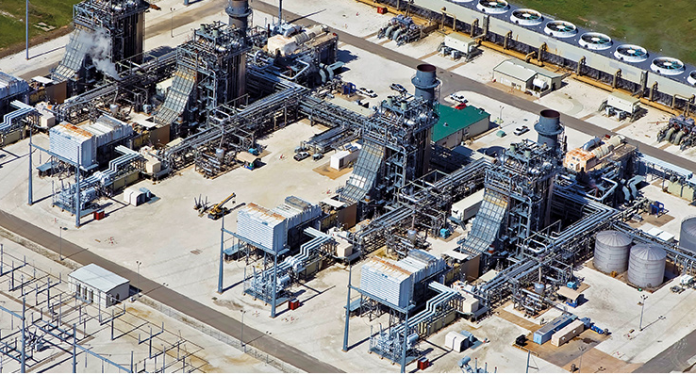GE Power – how the Middle East is transforming its power and water industry
- September 14, 2018
- Posted by: administrator
- Category: Investment and Finance, Asia

Azeez Mohammed, president & CEO, GE’s Power Conversion business, discusses how the Middle East is transforming its power and water industry.
Azeez Mohammed: Global demand for power and water is accelerating – and the Middle East is no exception.
 A burgeoning population combined with multiple industrial diversification programs is fueling a boom in power and water projects. During the first three quarters of 2017, about US$30 billion of major power contracts and US$20 billion of water projects were awarded across the region. In 2018, the figure is looking more like $60 billion with the two sectors combined.
A burgeoning population combined with multiple industrial diversification programs is fueling a boom in power and water projects. During the first three quarters of 2017, about US$30 billion of major power contracts and US$20 billion of water projects were awarded across the region. In 2018, the figure is looking more like $60 billion with the two sectors combined.
But these stats only tell half the story. The sector isn’t just growing, it’s also undergoing rapid transformation – largely due to two key trends. A range of climate change initiatives, together with an appetite for a more balanced energy mix, is driving the integration of renewables onto grids and into conventional generation power plants.
Moreover, the region is witnessing the shift towards a public-private partnership model for financing new plants which diverts the responsibility for new plants into the hands of private investors – a change that inevitably puts more emphasis on long-term return on investment. In other words, it’s no longer enough to evaluate the viability of a plant based on its capital expenditure – opex is becoming a key factor as well, and maximizing efficiency of the plant life cycle is crucial.
I believe a key area of opportunity – whether for new projects or existing assets – lies in optimizing the operation of power plant auxiliaries: pumps and fans, for example. These consume considerable amounts of energy: up to 4 percent of total power plant production for a combined-cycle plant, and as much as 15 percent for fuel-fired or coal power equivalents. Bringing these numbers down would be a significant win – and there’s a solution that allows developers to do just that.
Taking the brakes off motors
Consider this: in a typical power plant, the motors that drive the auxiliaries run continuously at full speed and are controlled by either a throttling valve and/or recirculating valve. This is the equivalent of hitting the accelerator and the brake at the same time. It’s a method that’s inefficient – and yet 90 percent of installed motors around the world operate this way.
Variable frequency drives (VFDs) are an effective solution to this problem, directly controlling motor speed, with no need for traditional valves. This speed variability means they use only as much electricity as is necessary to meet demand, making them far more cost-effective and efficient. With high efficiency across the total speed range, VFDs can adapt to meet varying demands and conditions. It’s estimated in the industry that VFDs could save 1,718 billion KWh globally – the equivalent output of 286 nuclear reactors.
In the industrial plant settings, controlling the motors’ speeds to follow process requirements saves considerable amount of the energy, enabling as much as 10 to 30 percent operational savings in terms of auxiliary equipment consumption in a power plant.
Compare electrical VFDs against mechanical systems and – again – they have the edge. Electrical VFDs are inherently more reliable, with a lower required repair time and no limit to the number of starts. They’re also easier to maintain, saving significant operations and maintenance costs and resulting in higher asset availability over 30 years of design life.
Extracting the benefits inherent in VFDs relies on ensuring they’re fully integrated with the motors they drive. In fact, I’d argue that this is crucial. This is precisely why GE takes a whole-system approach, applying proven expertise to either integrate our VFDs with other motors, or to supply the whole motor and drive system ourselves. Our electrical VFDs and motors enable the possibility of connecting high-speed motors directly to the load shaft. By doing away with the need for gears, this can improve efficiency by up to around 1 percent on the overall train.
One recent example is our successful commissioning of twelve 18-megawatt VSDs at Saudi Electricity Company’s Shuqaiq steam power plant. These will feed the boiler feed pumps and control motor speed, torque and power, responding rapidly to changes and minimizing effects on the supply network. The technology also eliminates complex mechanical components, enabling soft starts that help to limit maintenance requirements even more. Overall, it will deliver greater efficiency over the entire life cycle of the plant’s operation.
Plant electrification, what’s next?
VFDs are clearly an attractive option for any power plant investor looking to optimize efficiency – but let’s take this further. To release even more system efficiency, digitalization is the natural next step in plant electrification.
Armed with real-time data insights, plant operators can fine-tune operations in real time and move from scheduled maintenance to a predictive model, identifying potential faults even before they arise. This minimizes downtime and ensures the entire plant operates at optimized efficiency. In the near future, intelligent machines will enable automated ordering of new parts – a key step to elevate efficiency across the entire plant value chain.
This new wave of digitalization is already turning power plants and utility sites into leaner, more efficient operations. I’m convinced this shift of adopting electrification coupled with digitalization marks the arrival of a new industry standard, as power plant operators reap the benefits. It’s a winning combination that is fit for growth regions such as the Middle East.
